Benešov Concierge
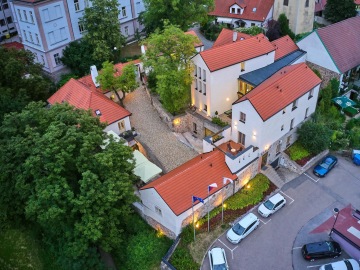
Sights walking distance

The ruins of the Minorite monastery
According to the chronicle, so called Beneš Minority, the convention of minorits of Benešov was set up in 1247 and thus by the provost of Staroboleslavská chapter, Tobiáš from Benešov. Mr. Tobiáš should have given the family residence of Benešovic, which was situated on the promontory, above the town, nowadays called Karlov. In the year 1294, the convention as well as the whole town burnt down and therefore the ancestor of Tobiáš had a new monastery built and extended.

The Building of Museum of Art and Design
Art Nouveau house nr. 74 was built in 1904, based on the project of Marcel Dusil, originally for the purposes of the District Economic Savings Bank in Benešov. In the year 1992, a display devoted to the history of the town and its surroundings, sights of the region and the artists, who worked here, was made public. Graphics and exposition of Czechoslovak photography is displayed within the museum, which is the only one in the Czech Republic.
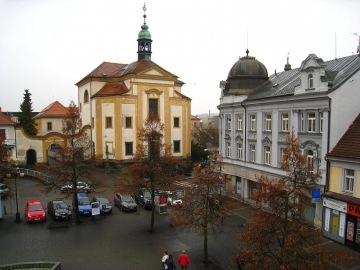
The St. Ann’s Church
Baroque St. Ann’s church, the landmark of the Masaryk Square, which was built in 1708, together with the former piarist residence. There was a library, a refectory and a room for accommodating teachers and students. The monastery yard with sun clock is also worth seeing.
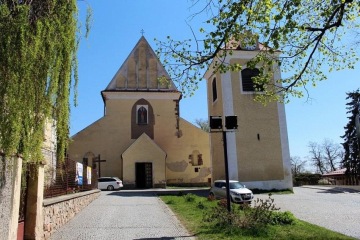
Church of St. Nicholas
Early gothic church from the 13. Century, which is situated in the Karlov location. Valuable baroque decorations remain preserved in the interiors - statues by M. B. Braun and wall paintings by I. Raab. At the southern side, a gothic shaped portal with segmented pillars remains.
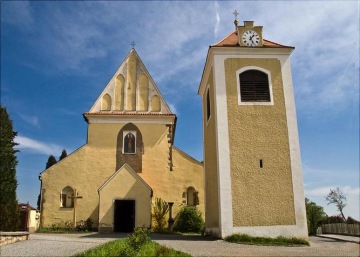
The Upper bell tower in Karlov
A very valuable wooden strut type bell tower with four-side surface and a low chisel roof, stands opposite to the entrance of the St. Nicholas Church. In its walls shall still remain one of the original monastery towers. It gained its today’s look after a reconstruction in 1828, when it was equipped with a clock.
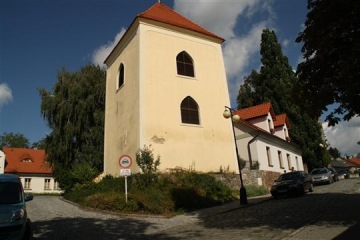
The Lower bell tower in Karlov
The former wooden bell tower is mentioned in written sources at first in the year 1627. It used to stand on the place of an old provostry. Today’s brick appearance comes from the first third of the 19th century. There hangs a bell called “Ave Maria”, made by Mr. Rudger in the year 1322, and thus belongs to the oldest bells in Czech Republic.
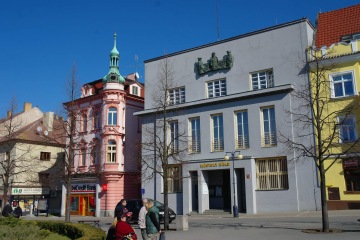
Town hall - today the building of the Town office
The house nr. 100, which dates back to 17. century. It was won by the town in 1867 and used as a town hall.
In the year 1995, the house was rebuilt according to the project of the Prague architect Josef Pleskot and extended to its today’s look. The reconstruction was awarded with “Grand Prix” of the architect's’ community for the year 1995.
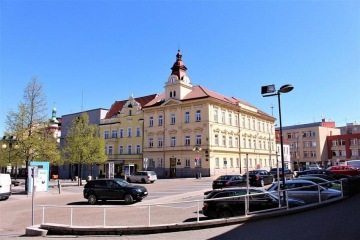
Judicial house
Originally the town hall, which first look with a middle tower was finished in the year 1820. The Judiciary has been seated in the house since the middle of the 19th century, when the town Benešov established the town hall in the house nr. 100 on the very same square. There are two cymbalos from the first half of the 17th century placed, which as the only ones in the town, tell each quarter of an hour.
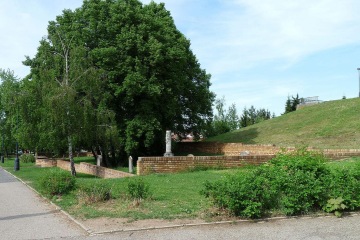
The Old Jewish Cemetery
The Old Jewish Cemetery is located on the Nová Pražská street, it was set up in the 17th century and served its purpose until 1883, when a new cemetery was established in its neighbourhood in Karlov. The old cemetery was almost destroyed in 1980, four years later, it was changed into a park with a few gravestones left.
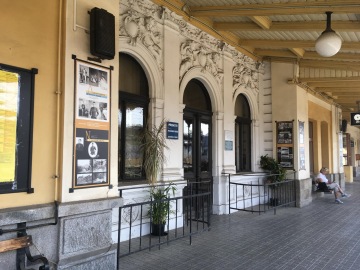
The building of a railway station and the Imperial room
The original part of the building was built in 1872, the northern part was built additionally at the end of nineties of 19th century, in the same time, the Imperial room was also built, a luxurious waiting room for the successor to the throne, František Ferdinand d’Este for his travelling by train.

Brewery Ferdinand
The brewery was moved to Benešov from Konopiště in 1897 by the archduke František Ferdinand d’Este. The production of the local beer is still based on the original recipe, uses its own barley malt from its own backyard malt house and the best hops from the Žatec Region.
Chateaus and castles

Chateau Konopiště
The castle Konopiště was originally built as a Gothic fortress inspired by the French castellums from the end of the 13th century, set up probably by the bishop Tobiáš from Benešov. František Ferdinand d’Este, who bought the chateau in 1887, rebuilt Konopiště into a majestic imperial residence. He married Sophie from Hohenberg in 1900. A part of the baroque garden is also the so called Pink garden with greenhouses.

Chateau Jemniště
In 1720, František Adam Trauttmansdorff assigned the famous Czech architect F. M. Kaňka with the task of building a chateau, which would comply with his status of a prominent aristocrat. The chateau is a typical aristocratic residence from the time of baroque peak and such famous artists as Braun or Reiner took part on its decorations. The current owner is Mr. Jiří Sternberg, who inhabits the left wing of the chateau with his family all year-long.

Castle Český Šternberk
Český Šternberk belongs to the best-preserved castles in the Czech Republic. It was set up in 1241 by Mr. Zdeslav from the Divišovci dynasty, above the river Sázava and it was given the name “Šternberk”. The name was deduced form the coat of arms of Divišovci, a golden star with eight apexes. The family of the founder, the Sterbergs still own this residence.

Horseback riding and carriage rides
The baroque farm Benice breeds around 80 horses, mostly Kladruby breed. Kladruby horses are one of the oldest continually bred horse breeds in the world. The farm offers unique rides through the beautiful nature on the horse’s back or in a carriage, horse-riding lessons and tuition of leading the team of horses for beginners as well as advanced riders, over the summer a pub is open in the old granary.

